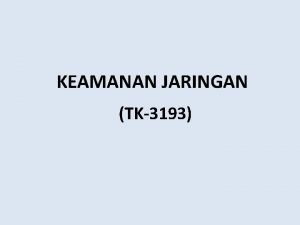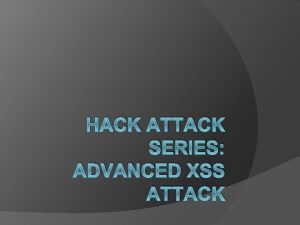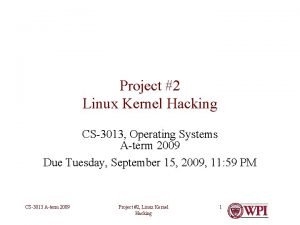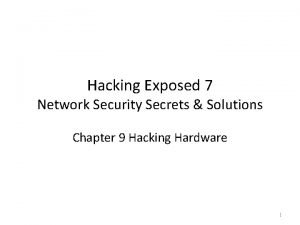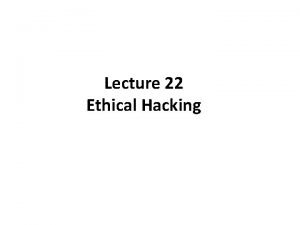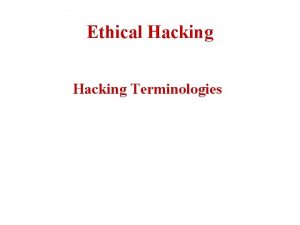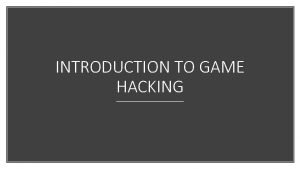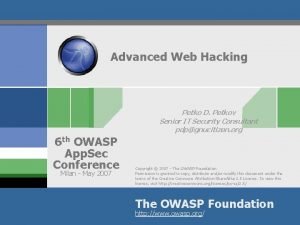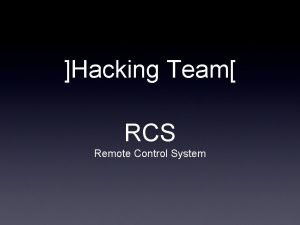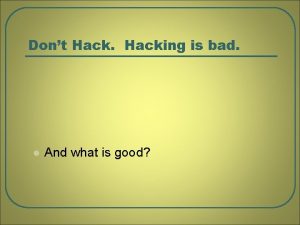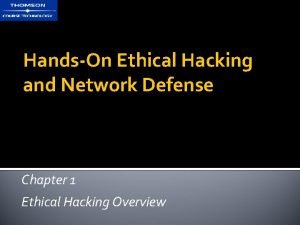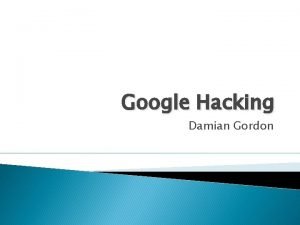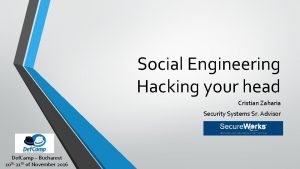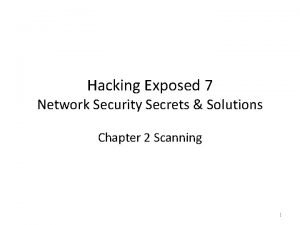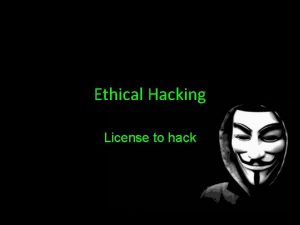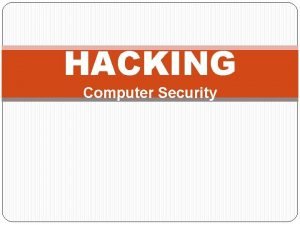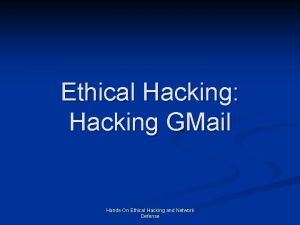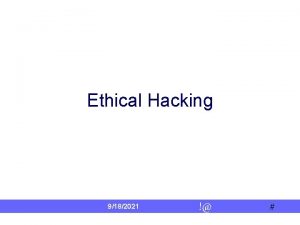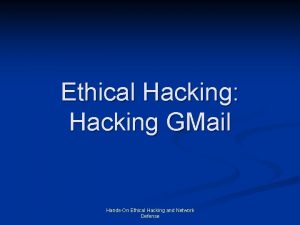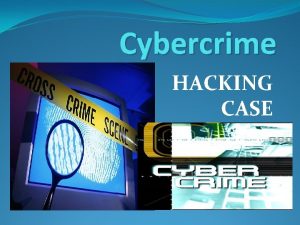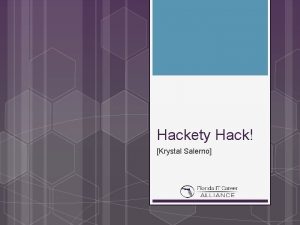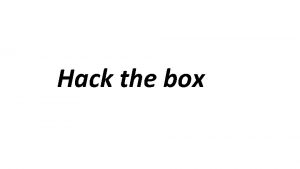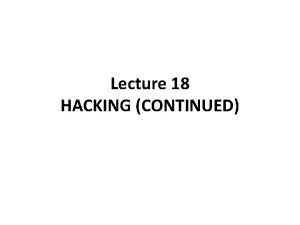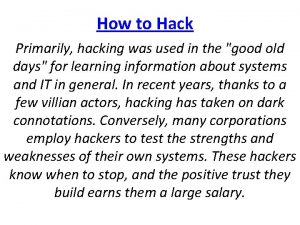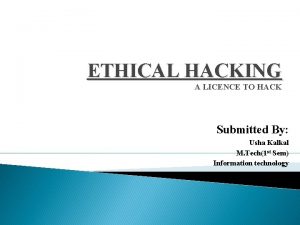HACKING Dont Learn to Hack Hack to Learn






















- Slides: 22

HACKING Don’t Learn to Hack – Hack to Learn

Outline • • Brief History What do hackers do? Hacker’s techniques System Hacking

Who is a “hacker”? • There at least two common interpretations: – Someone who bypasses the system’s access controls by taking advantage of security weaknesses left in the system by developers – Someone who is both knowledgeable and skilled at computer programming, and who is a member of the hacker subculture, one with it’s own philosophy and code of ethics

A Brief History of Hacking • 1960 s – MIT AI Lab – Ken Thompson invented UNIX – Positive Meaning • 1970 s – Dennis Ritchie invented C – Phreaking : John Draper – Phreaking : YIPL/TAP – Phreaking : Blue boxes

A Brief History of Hacking • 1980 s – Cyberspace coined – 414 s arrested – Two hacker groups formed – 2600 published • 1990 s – National Crackdown on hackers – Kevin Mitnick arrested – Microsoft’s NT operating system pierced – National infrastructure protection center unveiled

A Brief History of Hacking • 2000 – In one of the biggest denial-of-service attacks , hackers launch attacks against e. Bay, Yahoo!, CNN. com. , Amazon and others.

What Do Hackers Do? • System – Access confidential information – Threaten someone from YOUR computer – Broadcast your confidential letters or materials – Store illegal or espionage material

What Do Hackers Do? • Network – Eavesdrop and replay – Imposer: server / client – Modify data / stream – Denial-of-Service

Hacker’s techniques • System hacking • Network hacking • Software hacking

System Hacking • • Footprinting Scanning Enumeration Gaining access Escalating privilege Covering tracks Creating backdoors Denial of service

Footprinting • Objective – To learn as much as you can about target system, it's remote access capabilities, its ports and services, and the aspects of its security. • Techniques – Open source search – Whois – Web interface to whois – ARIN whois

PING

whois microsoft. com

Web interface to whois

Output of: whois tamuk. edu@whois. internic. net

ARIN whois

Scanning • Objective – Bulk target assessment and identification of listing services focuses the attention on the most promising avenues of entry • Techniques – Ping sweep – TCP/UDP port scan – OS Detection


Port numbers and description

Enumeration • Objective – More intrusive probing now begins as attackers begin identifying valid user accounts or poorly protected resource shares • Techniques – List user accounts – List file shares – Identify applications

NETBRUTE FORCE

PASSWORD FILE GRABBER
 Aldy bug
Aldy bug Dont ask dont tell political cartoon
Dont ask dont tell political cartoon Don't laugh at me allen shamblin
Don't laugh at me allen shamblin Kinesthetic imagery
Kinesthetic imagery Anatomi hacking
Anatomi hacking Disclaimer hacking
Disclaimer hacking Linux kernel hacking
Linux kernel hacking Hackersforcharity
Hackersforcharity Hacking exposed 9
Hacking exposed 9 Speech on ethical hacking
Speech on ethical hacking Ethical hacking terminologies
Ethical hacking terminologies Ethical hacking disclaimer
Ethical hacking disclaimer Tamagotchi hacker
Tamagotchi hacker Sitedigger
Sitedigger Usb hacking tools
Usb hacking tools Advanced website hacking
Advanced website hacking Hacking team rcs
Hacking team rcs Ethicsl hacking
Ethicsl hacking Tiger box hacking tools
Tiger box hacking tools Google hacking index of
Google hacking index of Hacking your head
Hacking your head Hacking disclaimer
Hacking disclaimer Hacking exposed 9
Hacking exposed 9




